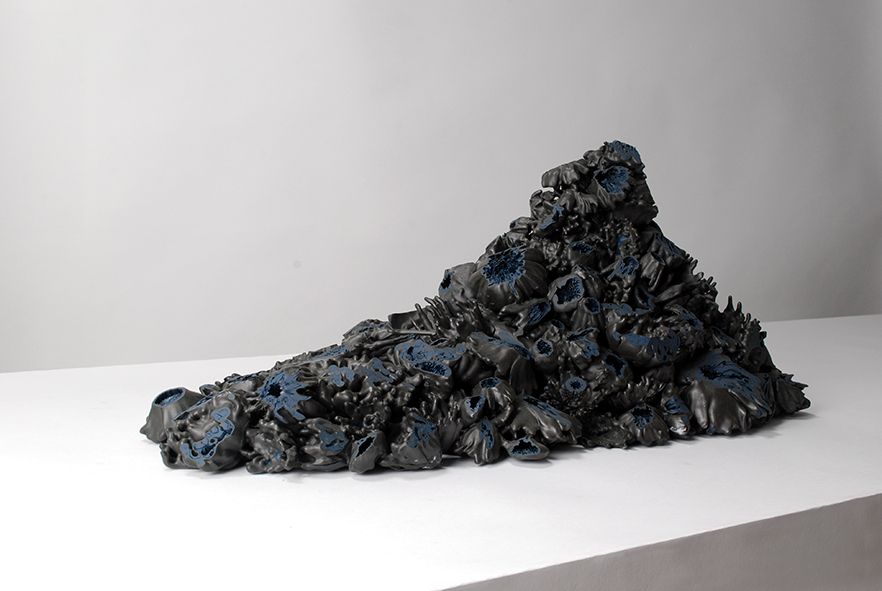Kirsten Spuijbroek | Preview

A flower’s experience
For tens of thousands of years, myths have circulated around the world describing how gods made the first humans out of river clay. Aside from intriguing stories, they can also be seen as a fascinating image of the idea that human culture began with the technique of making useful and ornamental, symbolic and ritual pottery out of shapeless, ubiquitous river silt. Humans as the pottery-making species. The mystery of life, in which the primal force of the eternal new beginning and the awareness of mortality merge, has been associated with the delicate beauty of flowers by people all over the world for tens of thousands of years. Even Neanderthals buried their loved ones under a blanket of flowers.
In the work of Kirsten Spuijbroek, these two elements unite once more. And although they are objects, it is the quiet representation of the processes at play that form the poetry of the work. Everything about it refers to change, to processes of creation, loss, and recovery. Not only in a physical and organic sense, but also in the craft and emotional meaning of those words. The fragile beauty of the flowers has been dipped into the liquid porcelain clay and given an equally fragile yet resilient form in the fire of the kiln. In the heat of over a thousand degrees, the flowers burn and perish, but their porcelain shell is created.
What remains are not prints of the flowers as they occur in nature. The artist is not interested in the beauty of the flowers, but in making visible and transferring what the flowers have experienced: becoming heavy, deformed, rotten; cracking, being tested in the fire, disappearing, and becoming eternal. Leaving behind a form that is as delicate and beautiful as a natural flower, but in a totally different, human way.
What the flowers have gone through, our souls have gone through too, through loss and shame, grief and mourning, and blossoming and decay. The flowers merge into one before our eyes and become the same intriguing, confrontational and vulnerable image. It is the clear choice of flowers and porcelain, and the cool and patient experimentation with material, pigments, glaze, and processing, that give the various shapes (masks, constructions, installations, sculptures) their emotional power.
Everything is matter, earth, and life, and yet all the effort we make, all the ingenuity we develop, all the strength it takes to understand something and to make peace with existence leads to this one realisation: we will have to make space and time for our relationship to what is no longer or to what is not yet. To who is not yet or no longer. It takes a lifetime of dedication to fully come to that realisation, and equally so to the exacting details and principles of craft that are required to bring this intense work to life.
Text: Dirk van Weelden
